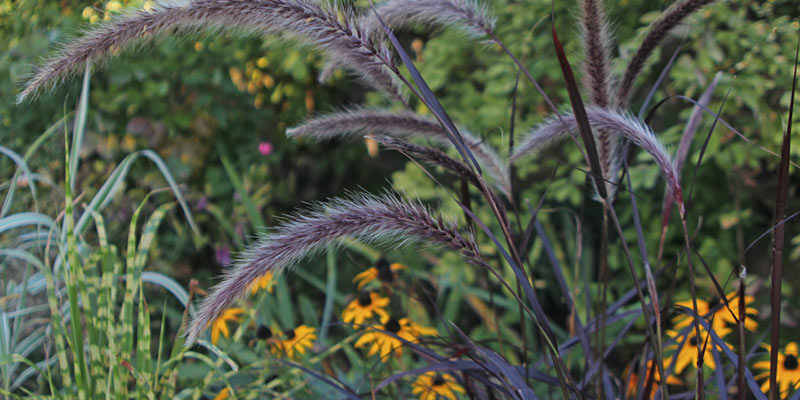
Available in a wide array of colors, sizes, and growing habits, ornamental grasses are a wonderful group of plants which can add beauty and interest to your garden. They are known to perform well as container plants and tend to attract a variety of fauna into your garden.Widely acclaimed as plants of all seasons, ornamental grasses can also be grown under diverse soil conditions and normally free of insect and disease problems. Most types are tolerant of severe drought. While many large types can create the illusion of movement, especially in the slightest breeze.
In terms of visual appeal, these grasses have been found out to combine well with other flowers and shrubs, allowing your garden to feature an interesting range of colors and textures. They are often used to set off small or large lawn areas and are bonus material for long-lasting flower arrangements. Here are six tips which may help you in planning and planting ornamental grasses:
1. Find a suitable location
The best way to set yourself up for success in the field of gardening and lawn care is to plan before you plant. This will help you avoid a ton of problems in the future. First, make sure that the location in which you plan to plant your ornamental grasses is filled with sunlight and good soil. We all know that a sunny place with well-drained, fertile soil is the perfect place to keep your plants healthy and happy. Additionally, you might want to expand your garden now that you’ve finished several planting projects, so it’s always important to plan ahead so that areas for future growth will be ready when you are.
2. Soil preparation
If you’re looking to enhance your plant’s performance and encourage healthy, robust growth, it’s best to prepare your soil before you begin planting. Have your soil tested first in order to determine whether any vital nutrients and minerals are lacking or not. Keep in mind that the goal of soil preparation is replenishing essential nutrients and minerals, and also loosening compacted soil.
There is no “ideal” time of day or season that soil preparation must be performed. Just be sure that the ground is not too wet or frozen when you decide to do so. You may even begin planting when temperatures are rather cool. However, if hard frost is expected in the near future, it’s best to delay planting for some time until temperatures start to rise to a moderate degree. Overall, as long as your soil is ready and workable, it’s fine to plant.
3. Check the hardiness rating
Before you begin planting, it’s always a good idea to check the hardiness rating of the various types of ornamental grasses you want to grow.The hardiness of plants refers to their capacity to survive unfavorable growing conditions in terms of climate. Simply put, hardiness describes how well a plant can tolerate heat, cold, flooding, drought, or wind. There are several sites on the Internet which list the hardiness zone of many types of ornamental grasses. Use this information to compare with the hardiness zone of your area. Finally, match the correct plant according to your own garden’s hardiness zone.
4. Grasses grow well in patio pots
From coast to coast, grasses, along with rushes and sedges, are star players in many gardens. What’s more is that they are also a perfect fit for the role of container plants. Patio pots are usually the most ideal container for ornamental grasses. However, always make it a point to put tall varieties in larger and heavier pots, as they might be prone to being blown over by strong winds. Just remember to add in sufficient soil that is well-drained and fertile for planting.
5. Good drainage is a must
Even plants that are used to high moisture-retentive environments require good drainage in order to thrive. Keep in mind that no type of ornamental grass enjoys having wet feet. Most, if not all, ornamental grasses prefer to be planted in soil that is well-drained and enriched with compost or other organic matter. When it comes to those grasses planted in containers, be sure to use good-quality potting soil. Never use garden soil since it is too dense for containers and may not allow water to drain well.
6. Irrigation
Established ornamental grasses located in areas with constant rainfall throughout the year will not require watering, unless during instances of serious drought. However, in areas with seasonal rainfall, native grasses will tend to go dormant during the dry season and may die if they are given water. Non-native ornamental grasses, on the other hand, will need some watering during the dry seasons.
Planning and planting ornamental grasses is a task any plant enthusiast can take on. Now that you’ve learned these top six tips on how to go about your planting project, it’s time to head outside and start digging.
